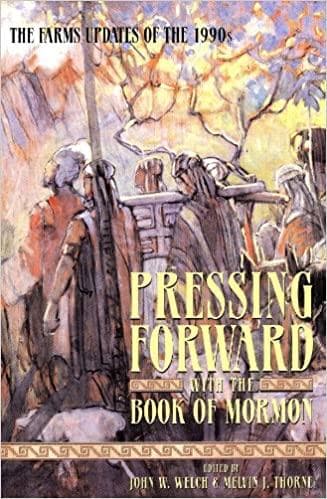Book
69 Chapters

“They got aboard of their vessels or barges, and set forth into the sea, commending themselves unto the Lord their God.” (Ether 6:4)
Traditionally, most anthropologists have accepted the theory that the ancestors of all Native American cultures in the New World migrated by foot from Asia during the Pleistocene Era when the sea level was lower and a narrow strip of land called the Bering Land Bridge connected the two continents. But as a review in BYU Studies shows,1 Dr. E. James Dixon, in Quest for the Origins of the First Americans, challenges this traditional model.2
Dixon is a leading authority on the archaeology of eastern Beringia, the chain of islands that once formed the ancient land bridge connecting Asia with present-day Alaska. Although no one doubts the existence of this land bridge, or its potential as a conduit for human migration, Dixon demonstrates that this could not have been the sole mechanism for populating the Americas. He presents impressive and compelling evidence that suggests that the first, or at least early, inhabitants of ancient America actually arrived on ocean-worthy vessels.
The geology and paleoecology of the Beringia region suggest that it was not until about 9500 B.C. that the Bering Land Bridge became passable for human overland migration. Consistent with this date, there is no documented evidence of human occupation anywhere in the Beringian corridor until about 9000 B.C. Yet there is ample evidence of early occupations along the west coasts of both North and South America that date at least two or three thousand years and in some cases many thousands of years before that. Since it appears that there was no way of crossing overland at such early dates, Dixon asserts that these settlements must have been founded by seagoing peoples.
It is well documented that the Pacific coasts of Asia were dotted anciently with numerous settlements. Dixon suggests that shortly before 12,000 B.C. the sea level rose rapidly as the climate became abruptly warmer and the sea engulfed communities around the Asian Pacific rim (something like a Pleistocene Waterworld). This could have triggered eastward migrations following prevailing currents into the New World. By the time the Bering Land Bridge became passable, the descendents of these early travelers had already settled over much of the western coastline of North and South America and had even moved inland in some areas.
LDS scholars have long been interested in the issue of transoceanic crossings to the ancient New World,3 but they have found scant support among the prevailing experts. Dixon himself was at one time criticized by several of his colleagues for suggesting the possibility of transoceanic migrations and was counseled to drop the subject for fear of losing credibility within the profession.4 Dixon believes that the idea of pre-Columbian transoceanic contacts between the New and Old Worlds is not popular because of the tendency of some individuals outside the field to go too far in explaining all similarities between the two great cultural regions indiscriminately on the basis of diffusion across the oceans.
But carefully presented research findings like Dixon’s (and those from an increasing number of others) make it clear that humans anciently were capable of long-distance voyages across the oceans to visit or colonize parts of the New World. By extension, it is reasonable to conclude that small colonies of Jaredites, Lehites, and Mulekites could have made such trips as well.
Research by Allen J. Christenson, originally published as a FARMS Update in Insights (February 1996): 2.
1. See Allen J. Christenson, review of Quest for the Origins of the First Americans, by E. James Dixon, BYU Studies 35/3 (1995–96): 178–80. See also Stephen C. Jett’s excellent discussion of transoceanic contacts, in “Before Columbus: The Question of Early Transoceanic Interinfluences” (FARMS, 1993).
2. See E. James Dixon, Quest for the Origins of the First Americans (Albuquerque: University of New Mexico Press, 1993).
3. See John L. Sorenson and Martin H. Raish, Pre-Columbian Contact with the Americas across the Oceans: An Annotated Bibliography, 2 vols. (Provo, Utah: Research Press, 1990).
4. See Dixon, Quest for the Origins of the First Americans, 129.
Book
69 Chapters
Items in the BMC Archive are made publicly available for non-commercial, private use. Inclusion within the BMC Archive does not imply endorsement. Items do not represent the official views of The Church of Jesus Christ of Latter-day Saints or of Book of Mormon Central.